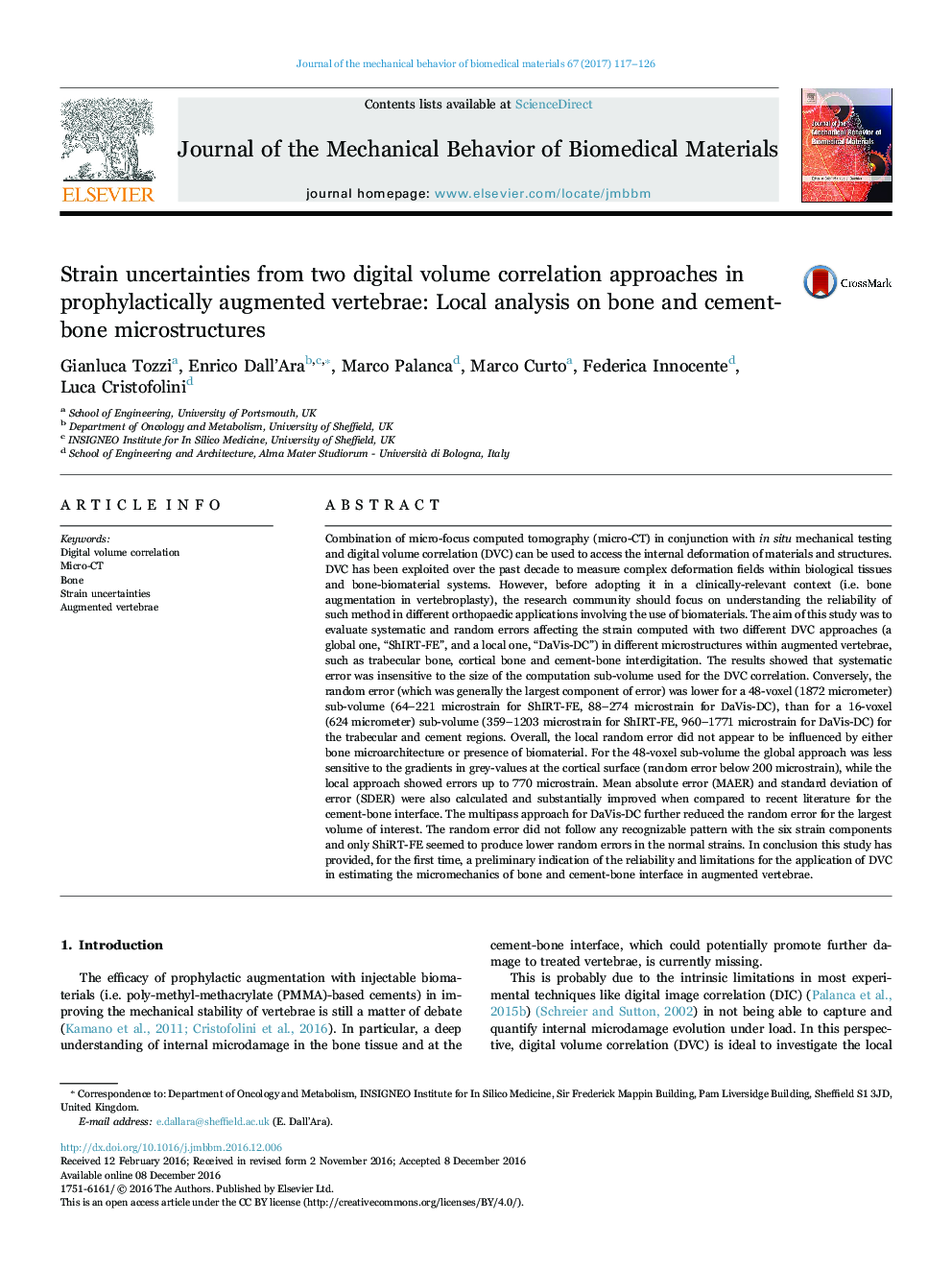| کد مقاله | کد نشریه | سال انتشار | مقاله انگلیسی | نسخه تمام متن |
|---|---|---|---|---|
| 5020758 | 1469078 | 2017 | 10 صفحه PDF | دانلود رایگان |
- DVC computation was carried out using two different correlation approaches.
- Strain uncertainties were quantified in five locations within augmented vertebrae.
- In most cases random errors of ~200 microstrain were found for sub-volume of 1872 micrometer.
- Accuracy and precision ranged from 100 to 400 microstrain for sub-volume of 1872 micrometer.
Combination of micro-focus computed tomography (micro-CT) in conjunction with in situ mechanical testing and digital volume correlation (DVC) can be used to access the internal deformation of materials and structures. DVC has been exploited over the past decade to measure complex deformation fields within biological tissues and bone-biomaterial systems. However, before adopting it in a clinically-relevant context (i.e. bone augmentation in vertebroplasty), the research community should focus on understanding the reliability of such method in different orthopaedic applications involving the use of biomaterials. The aim of this study was to evaluate systematic and random errors affecting the strain computed with two different DVC approaches (a global one, “ShIRT-FE”, and a local one, “DaVis-DC”) in different microstructures within augmented vertebrae, such as trabecular bone, cortical bone and cement-bone interdigitation. The results showed that systematic error was insensitive to the size of the computation sub-volume used for the DVC correlation. Conversely, the random error (which was generally the largest component of error) was lower for a 48-voxel (1872Â micrometer) sub-volume (64-221 microstrain for ShIRT-FE, 88-274 microstrain for DaVis-DC), than for a 16-voxel (624Â micrometer) sub-volume (359-1203 microstrain for ShIRT-FE, 960-1771 microstrain for DaVis-DC) for the trabecular and cement regions. Overall, the local random error did not appear to be influenced by either bone microarchitecture or presence of biomaterial. For the 48-voxel sub-volume the global approach was less sensitive to the gradients in grey-values at the cortical surface (random error below 200 microstrain), while the local approach showed errors up to 770 microstrain. Mean absolute error (MAER) and standard deviation of error (SDER) were also calculated and substantially improved when compared to recent literature for the cement-bone interface. The multipass approach for DaVis-DC further reduced the random error for the largest volume of interest. The random error did not follow any recognizable pattern with the six strain components and only ShiRT-FE seemed to produce lower random errors in the normal strains. In conclusion this study has provided, for the first time, a preliminary indication of the reliability and limitations for the application of DVC in estimating the micromechanics of bone and cement-bone interface in augmented vertebrae.
287
Journal: Journal of the Mechanical Behavior of Biomedical Materials - Volume 67, March 2017, Pages 117-126
